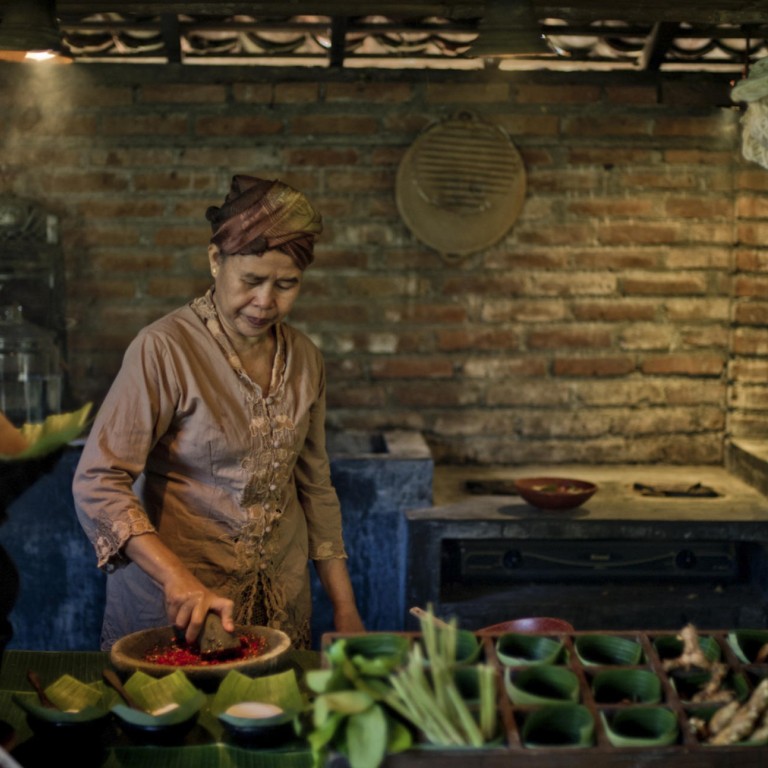
Learn the secrets of cooking Balinese dishes at luxury resort
Canggu, on the southwest coast of Bali, may be best known as a hipster and surfer hangout but its oldest hotel also offers cooking classes with a difference. The Hotel Tugu Bali, the resort's grande dame, sits by the quiet surf beach, surrounded by its vast collection of Indonesian relics. But the hotel is not stuck in the past. The cooking class at Tugu Bali offers visitors a new perspective on Indonesia's centuries-old culinary traditions.
Canggu, on the southwest coast of Bali, may be best known as a hipster and surfer hangout but its oldest hotel also offers cooking classes with a difference.
The Hotel Tugu Bali, the resort's grande dame, sits by the quiet surf beach, surrounded by its vast collection of Indonesian relics. But the hotel is not stuck in the past. The cooking class at Tugu Bali offers visitors a new perspective on Indonesia's centuries-old culinary traditions. The instructor is a celebrated chef in Asia and has cooked for several Indonesian presidents, including Abdurrahman Wahid and Megawati Sukarnoputri, who loved her stir-fried eggplant.
It is a hands-on cultural experience with Ibu Soelastri, unlike most cooking classes where you only get to garnish with some coriander or a squeeze of lime after a cursory presentation by an instructor. Hailing from the island of Java, Soelastri has been honing her craft since she was four years old, taking lessons from her grandmother. Now more than 60 years old, Soelastri is cheerful with a permanent smile. She speaks no English, but is assisted by effervescent interpreter/ sous-chef Komang Nuriani, known as Nuri.
Classes are conducted at Waroeng Tugu, an open hut with a thatched roof, the hotel's outdoor warung-style kitchen, with terracotta pots and a wood fire.
At Waroeng Tugu, guests can learn five dishes from a selection of traditional Balinese and Javanese recipes. As I'm in Bali, I pick all Balinese dishes. I add a sixth, begging them to teach me how to make sambal matah, a simple shallot and lemon grass condiment that accompanies every authentic Balinese meal.
As with many Southeast Asian cuisines, Balinese cooking involves pounding and grinding of ingredients, a great way to work out those arms and gain wrist strength.
The preparation of Balinese-style satay is truly a lot of fun. Lemon grass, turmeric, lesser galangal, candlenuts, shallots, garlic, red chillies, grated coconut and kaffir lime leaves are ground into a paste on a rough slab of stone that acts as a mortar. The paste is then mixed with freshly minced snapper and then moulded onto stalks of lemon grass. An elegant screw shape is traditional, but I can only manage the easier tapered cylindrical (foreigner) style.
Soelastri's culinary skills are unquestionably impressive. She peels hard galangal and banana stem with no difficulty; she pounds the aromatics into a smooth paste with an elegant ease. Meanwhile, I work up a sweat as most of my ingredients fly off my stone mortar.
Soelastri teaches me a few tricks. Fresh young coconut is grilled on charcoal instead of a gas stove. The flesh is then coarsely grated and added to the (yard-long bean) salad, imparting a toasty, sweet flavour that could not come from coconut prepared on agas stove.
Similarly, grilling funky shrimp paste on banana leaf with charcoal gives it a totally different flavour to when it is fried in oil.
For , egg is used to bind white snapper fillets and ground candlenuts, lemon grass, turmeric, coriander seeds and shrimp paste. The mixture is wrapped in a banana leaf with astringent ("Indonesian bay leaf") and steamed. The leaf is used as an antiseptic to slow down the spoiling of food in the heat.
The cooking class concludes with lunch. I eat in the lobby, surrounded by lush gardens, under a tall roof housing a 4.5-metre-high statue of a garuda, Indonesia's national symbol, made from a 120-year-old tree. A satay stick is offered to the spirits first, then I enjoy the delicious fruits of my labour while looking out over the ocean.
Printed copies of the recipes, an apron and oven pads with Balinese batik patterns are presented at the end.
Complimentary pick-up from your hotel is at 7am for an optional market tour, or 9am for the cooking class. Depending on participation and your level of expertise, the cooking class lasts from three to four hours.
It costs 950,000 rupiah (HK$569) per person, including a market visit. The cooking class by itself costs 750,000 rupiah. Reservations must be made 48 hours in advance.
